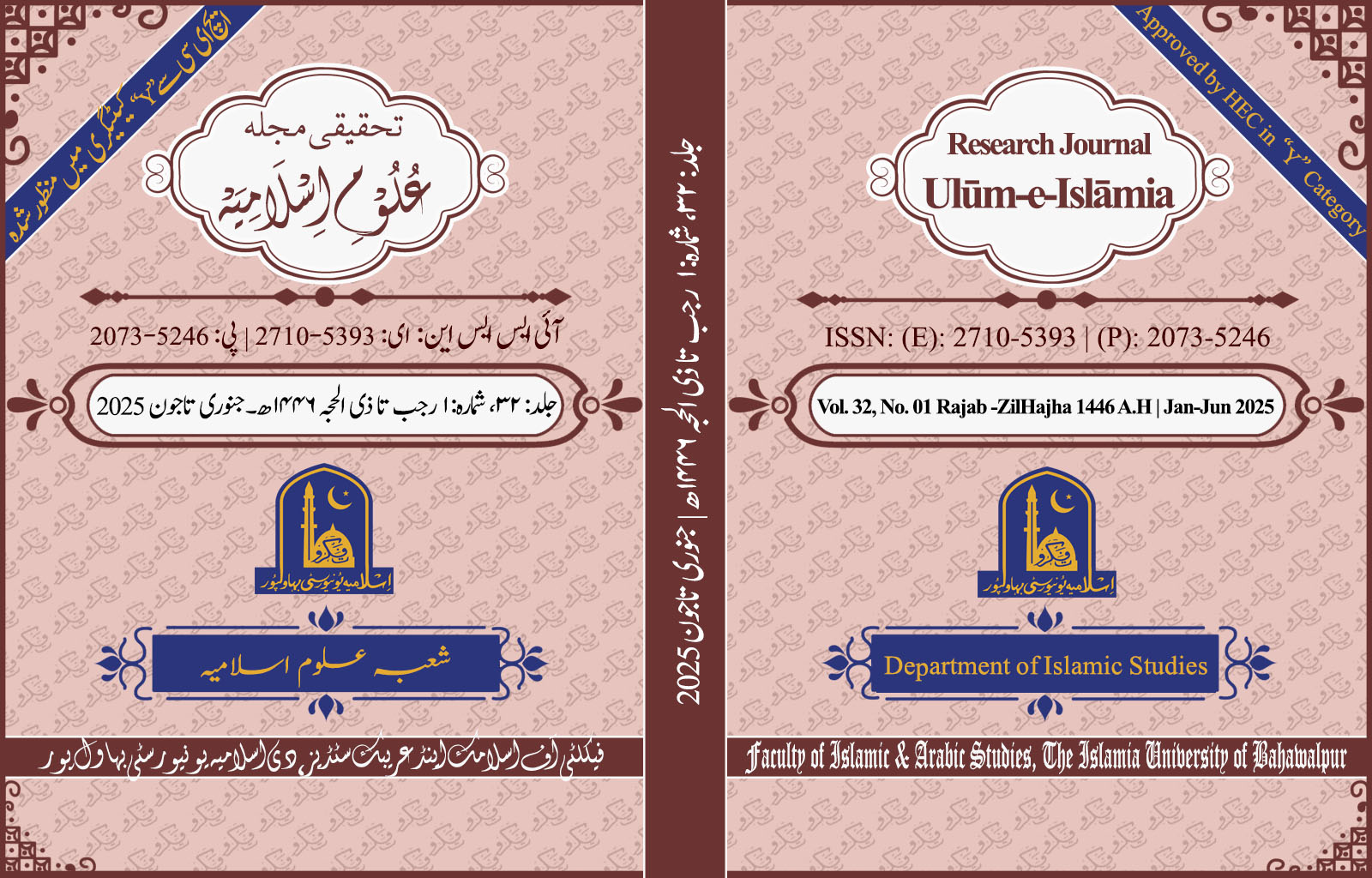التعليل بالاختلاف عند الإمام الدار قطنيدراسة تطبيقية
At-Taʿlīl due to ikhtilāf according to Imām al-Dāraquṭnī “An Applied Study”
DOI:
https://doi.org/10.52461/ulm-e-islmia.v32i01.4068Keywords:
At-Taʿlīl, Ikhtilāf, al-Gharāʾib wa’l-Afrād, Takhrīj, Study of Matn, Madār al-ḤadīthAbstract
The criticism of transmitted reports (naqd al-akhbār) is among the most distinguished sciences developed by Muslims, setting them apart from other nations. It emerged prominently during the era of the compilation of the noble Prophetic Sunnah, when critical scholars (nuqqād) appeared who rigorously scrutinized the traditions and reports, sparing no effort or sacrifice in the process. They classified the various levels of hadith, discerned between the authentic and the unreliable, clarified ambiguities that confused the masses, and exposed falsehoods by demonstrating their fabrications.
Among the most intricate, profound, and beneficial disciplines in establishing legal rulings and religious judgments—upon which the religion itself rests—is the science of ‘ʿIlal al-Ḥadīth’ (the study of hidden defects in hadith).
The work al-Gharāʾib wa’l-Afrād, is a monumental and unparalleled contribution within its domain. It is considered one of the foundational sources in the science of hidden defects, and ranks among the primary classical references. It reveals the extraordinary memory, sharp understanding, and scholarly mastery of Imām al-Dāraqutnī in this field, in which scarcely any scholar could rival him.
This study presents applied examples of how Imām al-Dāraqutnī identified ‘ilal (hidden defects) in hadith through the lens of ikhtilāf (variant transmissions) —whether ikhtilāf occurred in the isnād or in the matn. Such ikhtilāf is closely tied to the science of ʿilal and is, in fact, fundamental to it.
Downloads
Published
Issue
Section
License
Copyright (c) 2025 Research Journal Ulūm-e-Islāmia

This work is licensed under a Creative Commons Attribution-NonCommercial 4.0 International License.











